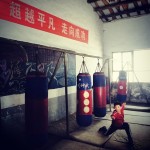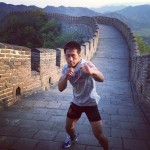“The waters of the Yangtze roll to the east, heroes come and go like foam on the waves.”
This line is from an old chant that starts off one of China’s great classic novels, The Romance of the Three Kingdoms. The novel describes the complicated struggle of three small kingdoms and their heroes in the aftermath of the fall of the Han Dynasty. The most famous of the heroes are the three brothers of Shu who swore an oath of loyalty under the peach tree: Zhang Fei, Guan Yu, and Liu Bei; their advisor the Merlin-esque Zhuge Liang; and their primary adversary, Cao Cao king of Wei.
Many different hero archetypes take the stage during the struggles for primacy over ancient China. There is Zhang Fei, the fiery warrior who rages fearlessly across the battlefield, taking on great odds and “facing the north wind with a wine cup in his hand.” In most depictions of Zhang Fei, he has a huge beard and a red face, bulbous features and wild eyes. He only knows how to fight; he was betrayed and murdered by his subordinates, who saw defeat written on the wall.
His Western counterpart would be Ares the God of War, Achilles, or maybe Thor the Thunder God, none of whom can stand to walk away from a fight or think their way out of one. These are the heroes who represent the wild passions of combat, the reckless love of the challenge and the corresponding disdain of anything not related to battle, blood, and glory. Zhang Fei reminds me of Conan the Barbarian, and his famous quote about lamenting women.





